RWM: For much, if not all, of your adult life, you have served as a chaplain, pastor or professor. What—or who—were the influences in your growing-up years that led you to a life of ministry in these ways?
TYN: There is no doubt that my parents, engaged their whole life in missionary and pastoral work, instilled in me early a sense that ministry marks the Christian’s life. For me, that has taken various forms in various contexts, including the last three decades in teaching at Grebel.
RWM: Conrad Grebel University College turns 50 this year. Your tenure as a professor there spans more than half of its existence. What changes took place during those years: in the college itself, in the students you taught and the faculty you taught with, and, most importantly, in yourself? What do you see for the future of Christian education at Grebel and more widely?
TYN: It’s rather startling that I have been at Grebel for more than half of its life. I suppose it’s rather difficult to chart how one has changed. My love for the New Testament has not diminished, nor has the enjoyment of teaching it. The students are always new, after all, and that always makes for new instances of learning and discovery. It is frequently observed by folks in my guild that Bible knowledge is diminishing rapidly, and with that the capacity to think “biblically.” I think that is something I, too, have observed over my teaching career. I continue to ponder what effect that will have on the church. It is an essential tenet of our Anabaptist tradition that the Bible, rather than a hierarchy or formal creed, is our authority. If so, I worry that the hollowing out of our knowledge of, and our ability to work with, the Bible will have deeply troubling consequences. With respect to “Christian education,” you are aware of the uniqueness of Grebel among Mennonite schools, fully integrated as we are at both undergraduate and graduate levels in the University of Waterloo. That brings profound challenges and opportunities. I have loved teaching Bible to a great diversity of students. It’s a stimulating and highly enlightening experience to reflect on the Scriptures in a context in which little can be assumed, and there to discover the power of the gospel embedded in human testimonies gathered together in the New Testament. The academic context of critical inquiry does not still the living gospel, in my experience. Perhaps that is a microcosm of the challenge of the church in this moment in history—learning to hear the Word and witness to it within the vulnerable context in which little is assumed and little is taken for granted. That is a profound challenge for Christian education when it takes place beyond the confines of the community of faith.
RWM: I was reading a short story recently in which the main character was a professor. I have always thought of the term “professor” as a synonym for “teachers,” who teach. In the story, though, the character used the verb form of “professor.” Have you ever thought that what you did was “profess,” and, if so, what were some of those “professions”?
TYN: Well, you’ve sat through some of my courses during your recent sabbatical from Canadian Mennonite. You’re probably in a better position to judge that. I’ve always tried to be explicit and transparent about my own convictions and hospitable to any and all students. And then I get gripped by the “stuff” of what I teach. Students typically comment on the “passion” with which I teach. It always worries me that I might be “professing” too much. So I also listen to students’ comments for signs that I give ample room to their questions and opinions. My experience is that “profession” mixed with hospitality goes a long way to create a shared experience of learning.
RWM: Has what you “professed” changed over the years? What things seemed perfectly clear when you were a young man that you hold more loosely as you’ve grown older? Conversely, what things in your youth were murky but have grown clearer or more profound over the years?
TYN: The older I get, the more I am struck by the silliness of simple hard answers to complex questions, which does not mean, of course, that we can afford not to take courageous stands and act on them. But each such stand is an act of faith. And I am more aware than ever that faith is precisely not, or at least very seldom, the same thing as “seeing.” I’m heartened that the great apostle Paul, whose writings have guided the church for two millennia, could confess that, to quote literally, we look into an enigma through a mirror. And that is why, in addition to faith, we need, above all, love—love for God and each other. I have thus come to value increasingly over the years to see Jesus not only as the recognizable Galilean who is “just like us,” but also as God’s baffling wisdom, the “stupendous stranger” as one of our hymns has it, who nevertheless walks alongside us as we grope our way.
RWM: On the first day of my semi-nary training, the president told us that what we were about to experience was not Sunday school, where we would be coddled in our beliefs; rather, we would be challenged, in the hope, as one professor later put it, we would involve ourselves in the upward spiral exercise of “faith seeking understanding, seeking deeper faith.” As a professor who was a former chaplain and minister, how do you balance prodding students out of their comfort zones while watching that they don’t go over the proverbial cliff?
TYN: I suppose my last comments anticipated this question. The short answer is that I have never seen it as my task to take people to the edge of the cliff and then to keep them from falling over. Teaching, too, is an act of faith—as is learning. Especially when it comes to religion, and most especially when it comes to sacred texts such as the Bible, the mind and heart are typically already fully invested. A fair and careful reading will quickly banish comfort, to be sure. But I think students have typically had a sense that I appreciate what is at stake in the questions and that they trust me as a guide not to violate their own often-frightening quest for new learning. My work many years ago as a hospital chaplain has brought an appreciation for the trauma new and unwelcome information can bring. I’m quite explicit about that with students. Years ago, I came to the conviction that if this really is God’s world, if the Bible truly is a vehicle of God’s self-disclosure, then we should trust the process of wrestling with it, however bumpy the ride, so to speak.
RWM: I’d like to ask you some questions about those courses I sat in on now. In your final class of Jesus: Life and Legacy, your undergrad survey course, it was said that you had probably taught Christ to a few thousand students. What did you want them to learn about him and why?
TYN: I was less interested in controlling what it is people should know about Jesus, than to invite them into as deep and rich an encounter with the New Testament’s presentation of Jesus as possible—all of the New Testament, not just the gospels. In that sense, my course on Paul is also a course on Jesus. I’m very grateful to be an Anabaptist Mennonite, but I’m deeply suspicious of thinking we’ve got the corner on Jesus. So I try to listen along with the students—Mennonite, Catholic, evangelical, Muslim—to the Jesus who emerges out of the New Testament to ask all of us uncomfortable questions. Those questions are life-giving even when they unsettle us, and especially when we’ve gotten a bit too familiar—even cozy—with the Jesus we think we know so well.
RWM: In reading the four gospels for class, I noticed a particular difference between the synoptic gospels and John. Matthew, Mark and Luke talk a lot about the “kingdom of God” being near and the implications of that. John, on the other hand, talks about “believing” in Jesus in order to be saved for eternal life. Do we get two different types of Christians if we start from two distinct entry points? If so, how do we reconcile them?
TYN: You mention the Synoptics and John. I might add those who go to Jesus via Paul. Different traditions have privileged certain entry points into the Jesus of the New Testament. That is a problem only if we each stay in the vestibules of those entrances. There is too much mistaking the entry hall for the whole house. I’m struck again and again by the breadth and depth of the New Testament canon. I take that depth and breadth as providential, and an important signal to visit the whole house together with those who typically come in through another door.
RWM: In Recovering Jesus, you quote Matthew 10:34: “Do not think that I have come to bring peace to the earth; I have not come to bring peace, but a sword.” You go on to explain that “[t]he words cited above are part of his speech where he warns [his disciples] of the opposition their words and activities are likely to provoke.” But if Jesus’ words and actions resulted in opposition—lethal opposition at that—would our time not be better spent on proclaiming and enacting the kingdom of God, as Christ did, and take what comes, rather than busying ourselves with trying to make the planet more peaceable for us to carry on our activities? After all, Melvin Gingerich, in a July 1951 Mennonite Quarterly Review article, stressed “. . . [w]e have no illustrations of Jesus and the apostles ever petitioning the government for favourable laws.”
TYN: That is too complex a question to answer adequately with a sentence or two. Jesus, along with his fellow Jews, lived under Roman occupation. Participatory democracy, human rights, conscientious objection—all highly valued features of our life in Canada—were nowhere on the horizon. The summons to seek first the kingdom and take up our cross nevertheless comes to us no less than to Jesus’ contemporaries. What it demands of us might well look very different in Canada than it did in Jesus’ day, or than it does in many places on our globe today, where the followers of Jesus are attempting to live the kingdom. In our setting, where we have some means with which we can affect government and economic policies, God’s reign requires that we do engage our government and our society generally, most especially if it is for the sake of others who suffer injustice. To “enact God’s kingdom,” as you put it, means we seek first it’s justice, as Matthew remembers Jesus saying, to take up “our” cross. That also means that to “seek” or “enact the kingdom” means so much more, encompassing the whole agenda of the church’s ministry of reconciliation: between us and God, and between us and our fellow human beings, including in the church. I find it so frustrating that we so often seem not to be able to hold together in a seamless whole the Jesus who comes seeking lost sheep, offering God’s parental love and demanding forgiveness in turn, and promising good news to the poor and release to those in prison. Shalom in its fullness still eludes us, I fear.
RWM: The Nickel Mines’ shootings showed the world an Anabaptist community that did not seek justice from the authorities or the family of the shooter. Instead, it forgave the man and showed extravagant mercy and grace to his family. What is the relationship between justice and mercy? Given our sinful, fallen state, is our salvation a just action of God or a merciful one?
TYN: The short answer is “yes.” The “or” is a fundamental mistake. God’s justice is first and foremost “right-making.” And so Paul can say in Romans 3, for example, that God’s righteousness or justice is manifested in mercy. Weird justice, not? God’s justice is sometimes bafflingly harsh, but as Paul teaches us to see in Jesus, including in his death and resurrection, God’s justice is most fundamentally and mercifully “saving.”
RWM: In your Biblical Foundations of Peace class, we spent time on the atonement, a hot topic in many circles today. While we discussed the differing theories of atonement, I thought your statement in Killing Enmity—to the effect that “[m]aking Jesus’ death God’s atoning gift, however inadequately any metaphor will capture the mystery of that gesture, was what God ‘had to do’ to reconcile with humanity”—both enlightening and provocative. Can you unpack this idea of “what God ‘had to do,’ ”—through Jesus’ life, death and resurrection—as opposed to our theorizing about what has to happen?
TYN: Putting it that way was to say that Jesus’ death happened in real history as a result of human brutality, human rejection of the messenger and enactor of God’s reign. This was not a puppet show. God responded in a surprising way—shockingly surprising to his enemies—to transform that act of rejection into God’s own ultimate offer of peace. The gospels don’t mince words about Jesus’ death being the undeserved death of a righteous person, even as they, in hindsight, trace the loving ingenuity of God to reconcile even with God’s enemies. Too much of the discussion of atonement today takes place in the present tense, as it were: “what does it take” to bring about reconciliation with God, forgiveness of sins, etc. The gospels tell a story, and an essential part of that story is the rejected offer of peace on the part of Jesus. But the apostles and gospel writers also narrate that story as the heart of “good news,” “gospel.” After all is said and done, however, the atonement remains an inscrutable wonder, and the most fitting stance is one of awe and gratitude.
RWM: Last fall, I reviewed Elmer John Thiessen’s latest book, The Ethics of Evangelism, in which he notes that, for many Christians, the fact Christ gave his followers what is now known as “the great commission,” is reason enough to be involved in evangelism. An online response to my review included the following comment: “For people like me, who considers himself a Jesus person but who doesn’t believe Jesus physically came back to life after his execution, I have little choice but to dismiss statements attributed to Jesus after he was dead. This view would be shared by all scholars who do not believe in the literal physical resurrection of Jesus.” If Jesus didn’t rise from the dead, and all we’re left with are the words and example of a dead man, is that enough?
TYN: There are two convictions I hold equally. One, I’m with Paul when he says to the Corinthians, “If Christ hasn’t been raised, then we are most to be pitied as those whose faith is utterly futile,” to render Chapter 15 of his first letter to them rather freely. That bald assertion does not set Paul apart from any other New Testament writer. Resurrection as a “symbol” of hope is not enough. We have hope because of the resurrection. If you take the resurrection out of the equation, there is no math left. But my second conviction runs just as deep: There is about the nature of resurrection a great and unfathomable mystery. All you have to do is compare Paul in I Corinthians 15 with the accounts in the gospels. It’s impossible to distill one clear view of what happened, not least with respect to what “physicality” means. What I find most surprising is that no attempt is made in the New Testament to make sure that the witnesses all claim exactly the same thing in terms of what it means for Jesus to have risen “bodily.” So I’m not sure our contemporary notions of “physical” can quite capture the New Testament understanding of “bodily.” I’m willing to keep pondering these questions while acknowledging the mystery at the heart of Easter and the limits of our understanding to grasp it. But to downplay the resurrection empties the gospel of content and force. One essential implication of the resurrection is that the church has a living liberator, master and sustainer. It is that premise that helps us to understand the gospels, for example, as a mix of pre- and post-Easter recollection. That historians have difficulty deciding what goes back to the pre-Easter Jesus should not surprise us. But as a “Jesus person” who believes he rose and accompanies the life of the church, that is precisely what we should expect to find. The gospels were written not by archivists, but by evangelists, after all. That excites me, and gives me hope.
RWM: On numerous occasions, I have heard you call Jesus, the church and the Bible “messy.” Each time, the description was used as a positive term. What do you mean by “messy”?
TYN: I like the word “messy” because it warns us against reducing persons, events and even doctrines to cut-and-dried assertions and propositions. I also like it because we learn of Jesus through the witness of a hugely diverse community of believers—men and women, companions of Jesus and those who joined later through their witness, Jews and Gentiles, educated and uneducated, urban and rural, Palestinian, Galatian, Macedonian and Greek. The ongoing incarnation of the Word in his diverse body is surely a miracle beyond comprehension. “Messy” points to that in a somewhat playful, or even mischievous, way.
RWM: Besides your scholarly achievements, you are an accomplished singer in English, German and Spanish; you play the guitar; and you paint. A former professor of yours, Dr. Vic Adrian, told me recently that one of your artistic works still graces his living room. How are these artistic activities informed by your faith, and, in turn, how do they inform it?
TYN: I grew up in a family in which music was a constant. My parents were both accomplished singers. And we often sang in public as a family. I started painting as a young teenager. Turns out, my mother has taken up painting in her latter years, so that, too, is likely “genetic.” I love listening to a wide variety of music, most especially to that in which words are weighty. That is especially the case with sacred choral music. I have had some wonderful opportunities to sing some great works with the Grand Philharmonic Choir here in Kitchener-Waterloo, for instance. It’s always a profound worship experience for me to sing the great works of the choral repertoire. But I also love leading singing in our church, helping the community to worship, even if I have to fake knowing Spanish. In terms of visual art, while I deeply respect artists who can convey great meaning, my own painting and photography is an endless fascination with creation. I absolutely love evocative landscapes that have us keeping our eyes open to the wondrous world around us. Tom Thompson is one example of such an artist. I suppose my landscape paintings are also an act of worship—worship as wonder and gratitude.
RWM: You dedicated Recovering Jesus to “my companion for life, Rebecca, and our children, David and Miriam, with whom to follow Jesus together is a gift too great to measure.” Do you have a story to share that would illustrate how your family has followed Jesus together?
TYN: I’m not sure I have a specific story to tell, but I am enormously grateful to live alongside one whose commitment to following Jesus puts my own to shame, and who encourages me through the depth of her commitment and discipline in the direction of faithfulness. I’m also deeply thankful for the thoughtful and independent decision my daughter, son and daughter-in-law have each taken to be baptized. I can’t imagine there will not be times of testing of the resolve baptism represents, as there have been for me, but I am convinced that Jesus walks alongside them at least as much as that they follow him, as he has me.
RWM: When I told you Dr. Adrian said you were much too young to retire, you replied that you weren’t rolling up your tent completely just yet. Have you plans, either professionally or personally, that you’d like to share?
TYN: I hope very much that there will be opportunity to serve the church in various kinds of teaching venues, both locally and internationally. That is exciting to contemplate. I would not be surprised if I might do some more writing as well. That said, I also hope to do more singing and painting. We’ll see how all that gets balanced.
RWM: Thank you for this time, Tom. Is there anything else to add that we haven’t covered today?
TYN: That’s more than enough, I’m sure. Thank you for your thoughtful questions.
For discussion
1. Tom Yoder Neufeld says that teaching and learning are acts of faith, especially when it comes to sacred texts such as the Bible (page 6). What learning or teaching experiences have stretched or deepened your faith? Are there settings that are more effective than a traditional classroom? What factors encourage or hinder us from being eager to learn?
2. The older he gets, the more Yoder Neufeld says he is “struck by the silliness of simple hard answers to complex questions.” Is faith as complex as he suggests, or is he an academic out of touch with real life? What do you think he means when he says that faith is not the same as “seeing”?
3. Are there questions in this interview that you would like to see answered in greater depth? Where would you like to push Yoder Neufeld to explain himself? Do you disagree with any of his comments?
4. Because Conrad Grebel University College is integrated into the University of Waterloo, Yoder Neufeld taught a wide variety of students, including non-Mennonites and non-Christians. What are the opportunities and challenges of this approach? Is it a good model for a church school? Are there situations where the church should shelter fledgling Christians from challenging faith questions?
—By Barb Draper



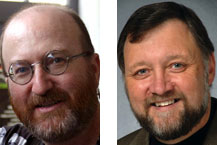

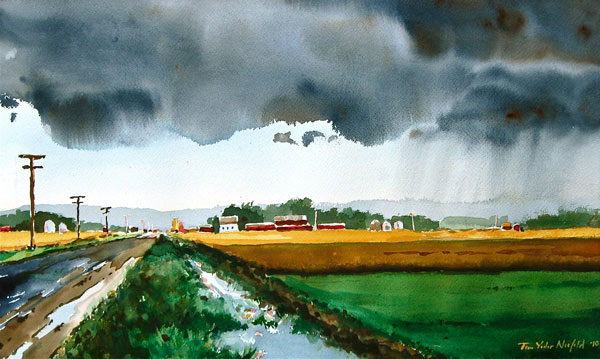
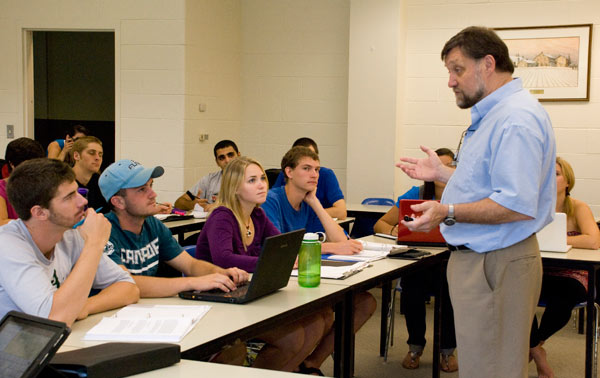
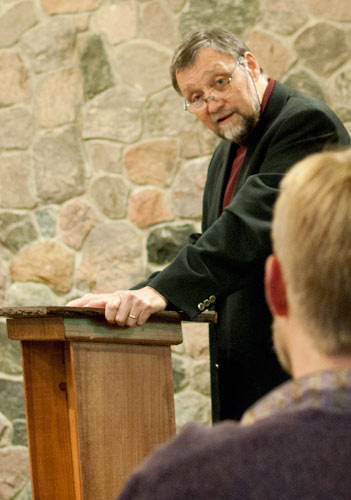
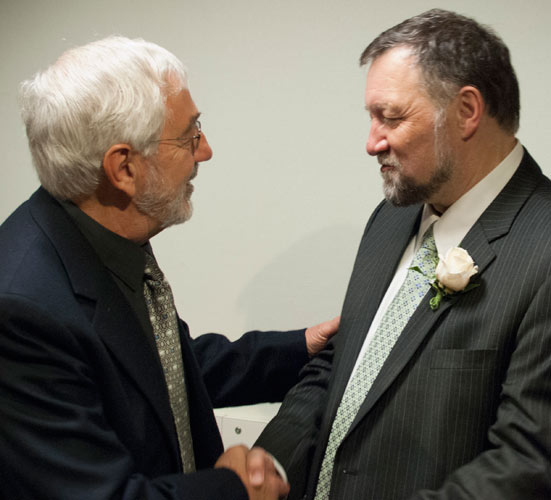
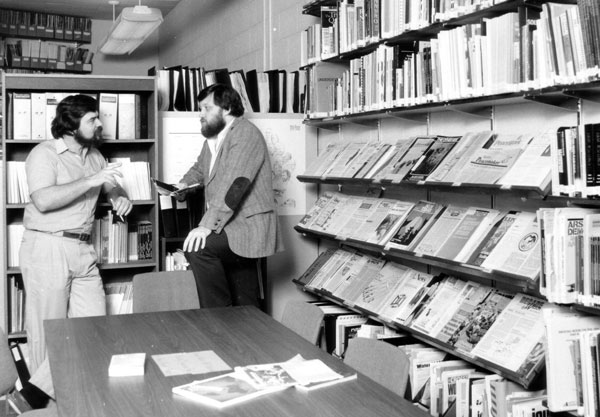

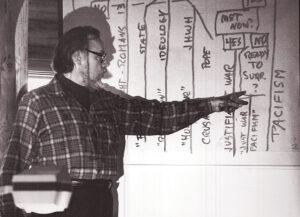
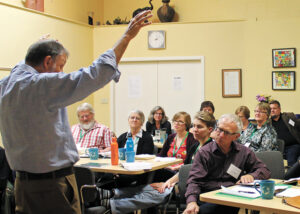
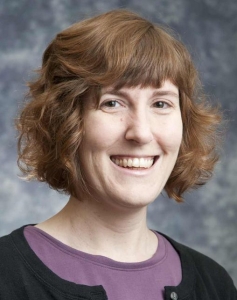

Leave a Reply
You must be logged in to post a comment.